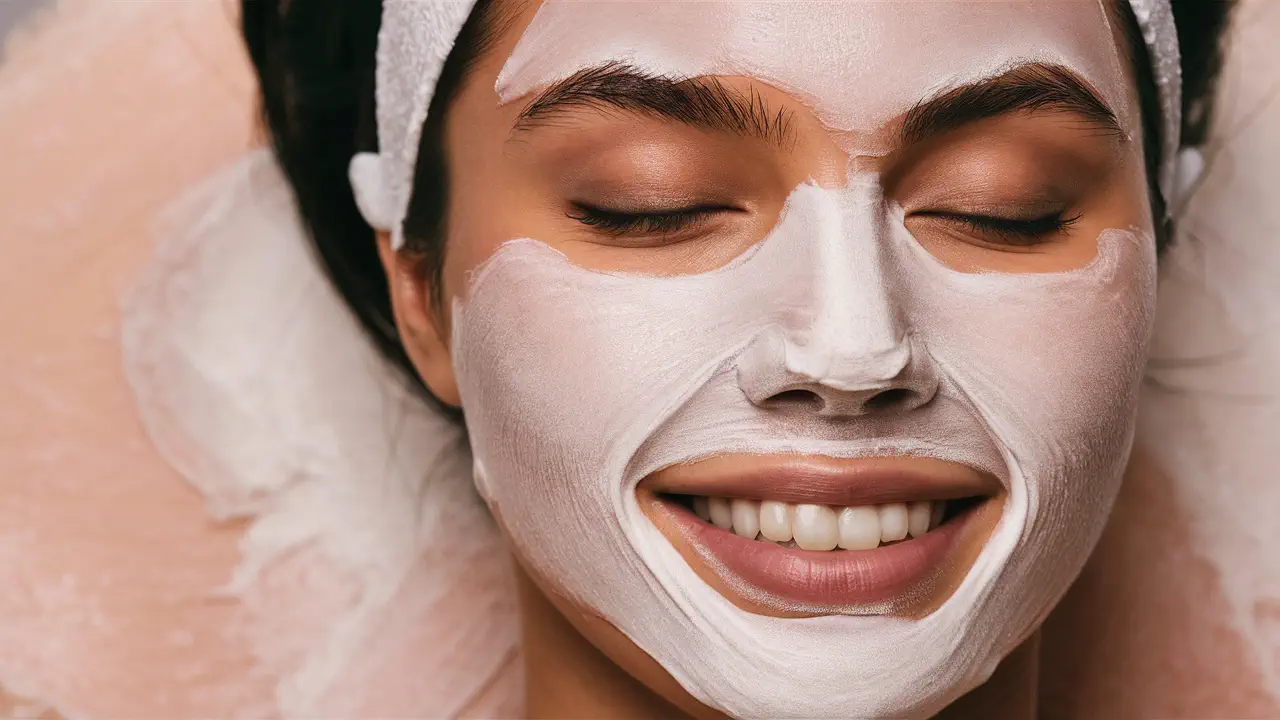Have you ever looked in the mirror and felt like your skin was a little dull, tired, or just lacked that healthy glow? I’ve been there. I’ve tried countless products, and to be honest, nothing has transformed my skin as much as a good glycolic chemical peel. It’s like hitting the “reset” button on your face.
In this article, I’ll explain why the glycolic peel is a true game-changer, how to use it safely, and which products are actually worth your money.
Here’s What We’ll Cover
What Is a Glycolic Chemical Peel ?
Benefits of Glycolic Chemical Peels
Best Glycolic Chemical Peel Products
Using Glycolic Peels Safely: Always Read Product Instructions
FAQs About Glycolic Chemical Peels
What is a glycolic chemical peel ?
A glycolic chemical peel is a type of chemical exfoliation that uses glycolic acid, an alpha hydroxy acid (AHA) derived from sugarcane. It has the smallest molecular size of all AHAs, which means it penetrates the skin more effectively to exfoliate dead skin cells, boost cell turnover, and improve skin texture.
In simple terms, a glycolic chemical peel works by loosening the “glue” that holds dead skin cells together. Once this top layer of cells is removed, the skin’s natural radiance is revealed, giving it a smoother, more youthful appearance. Glycolic acid peels are available in different strengths and are suitable for addressing common skin concerns such as dullness, fine lines, hyperpigmentation, and acne scars.
Benefits of glycolic chemical peels
The benefits are numerous and appear pretty quickly:
- Goodbye dullness! A peel gives your skin an immediate boost of radiance.
- Smooths fine lines: It stimulates collagen production, which helps reduce the appearance of fine lines over time.
- Fights breakouts: It unclogs pores, which is great for preventing breakouts and fading acne scars.
- Fades dark spots: It helps even out your skin tone by lightening dark spots and hyperpigmentation.
- Improves texture: It makes your skin feel incredibly soft and smooth, like a baby’s.
Best glycolic chemical peel products
Here are some of the best glycolic peel products available, ranging from mild formulations for beginners to stronger peels for more experienced users. Each product is designed to deliver effective exfoliation and visible results.
The Ordinary AHA 30% + BHA 2% peeling solution
- This powerful solution combines 30% glycolic and lactic acid (AHAs) with 2% salicylic acid (BHA) for a deep exfoliation that targets multiple skin concerns.
- Best For: Experienced users with oily, combination, or normal skin.
- Frequency: Use once a week for best results. Leave on for no more than 10 minutes.
Drunk Elephant T.L.C. Sukari babyfacial
- A popular option for at-home glycolic peels, this mask contains 25% AHAs, including glycolic and lactic acids, and offers a strong yet gentle exfoliation suitable for all skin types.
- Best For: Those looking for a gentler option without sacrificing effectiveness.
- Frequency: Once a week to prevent over-exfoliation.
Pixi Glow Tonic
- This daily glycolic acid toner is a milder option, making it suitable for beginners or those with sensitive skin.
- Best For: Sensitive or dry skin types looking for gentle daily exfoliation.
- Frequency: Safe for daily use; apply after cleansing.
Peter Thomas Roth Pro Strength 40% Triple Acid Peel
- For those with more experience using peels, this high-strength formula combines 40% AHAs, including glycolic acid, to provide an intense peel that deeply exfoliates.
- Best For: Normal to oily skin types familiar with strong peels.
- Frequency: Use once every two weeks due to high potency.
Caudalie Glycolic Peel Mask
- This mask is suitable for mild exfoliation, using glycolic acid to gently resurface and brighten the skin. It’s ideal for those new to glycolic acid.
- Best For: All skin types, including sensitive skin.
- Frequency: Use once or twice a week as part of your routine.
The Golden Rules for a Successful Peel
Before using any glycolic acid peel, it’s crucial to read the product instructions carefully. Each glycolic acid product varies in concentration and application time, so following these directions ensures you get the most effective results without risking irritation or skin damage. Here are our essential tips:
- Patch test, every time: Before applying a new product to your face, do a quick test on your forearm or behind your ear. If it stings too much, it’s not for you.
- Don’t overdo it: Stick to the recommended usage frequency. Trying to do too much, too fast can damage your skin barrier.
- The sun is your enemy: After a peel, your skin is more sensitive to UV rays. Sunscreen is non-negotiable! Wear an SPF every day, even when it’s cloudy.
FAQs about glycolic chemical peels
A glycolic acid peel exfoliates dead skin cells, revealing a brighter, smoother layer of skin and addressing issues like dullness, wrinkles, and pigmentation.
Generally, yes, but sensitive skin may need a milder formulation or lower concentration. Start with a patch test to ensure your skin tolerates it.
For stronger peels, once a week is usually sufficient. Milder toners can be used daily, but it’s essential not to over-exfoliate.
Yes, glycolic acid promotes cell turnover, which can help fade acne scars and smooth texture over time.
A toner is a gentler form of glycolic acid for daily use, while a peel is more concentrated and typically used less frequently for deeper exfoliation.
Yes, a mild tingling sensation is normal, especially if you’re new to glycolic acid. However, if it becomes uncomfortable or painful, rinse it off immediately.
It’s best to avoid using other exfoliants like retinoids or vitamin C on the same day as a glycolic peel to prevent irritation.
Rinse with cool water, apply a soothing moisturizer, and avoid other active ingredients until your skin recovers.
Yes, glycolic acid can cause a temporary purge as it speeds up cell turnover, which may bring underlying impurities to the surface.
Absolutely. Glycolic acid makes skin more sensitive to UV rays, so always apply SPF after using any glycolic product.
our Final Thoughts
A glycolic chemical peel is an effective way to achieve a brighter, smoother, and more youthful complexion by exfoliating dead skin cells and promoting cell renewal. From affordable options like The Ordinary to luxurious products like Drunk Elephant’s Babyfacial, there’s a glycolic peel suitable for every skin type and budget. Remember, always read product instructions carefully, start slowly if you’re new to glycolic acid, and be mindful of sun protection to keep your skin looking its best. With the right product and proper usage, a glycolic chemical peel can transform your skincare routine and bring out a radiant glow.
What to read next



Responses
Thanks for sharing this article! I’m curious, what are the benefits for sensitive skin?
It’s true that the term “acid” can sound scary, especially if your skin is prone to redness or irritation. While glycolic acid is known for being potent, it’s not a simple “yes or no” question for sensitive skin. It’s all about how you use it and what kind of product you choose.
In fact, with the right approach, a low-concentration glycolic acid can be incredibly beneficial for sensitive skin types. It’s often used to address issues like:
Gentle Exfoliation: Sensitive skin can still suffer from a buildup of dead cells, which can lead to a dull appearance and clogged pores. A low-strength glycolic acid (think 5% or less) can provide mild exfoliation without the harsh scrubbing of physical exfoliants. This helps reveal a smoother, brighter complexion without causing micro-tears in the skin.
Improving the Skin Barrier: One of the key benefits not often mentioned is that glycolic acid can actually help improve the skin’s natural barrier function. By promoting cell turnover and stimulating the production of molecules like hyaluronic acid, it helps the skin retain moisture, which is essential for a strong, healthy barrier.
Anti-inflammatory Effects: Research has shown that glycolic acid has some anti-inflammatory properties, which can be beneficial for calming and treating skin concerns like inflammatory acne.
How to Safely Use Glycolic Acid on Sensitive Skin
This is where the details really matter. If you have sensitive skin, you should never jump into a high-strength peel like The Ordinary’s 30% solution. Here are the steps to take instead:
Start with a Low Concentration: Look for products with a concentration of 5% or less. This is your starting point. Glycolic acid toners (like the Pixi Glow Tonic mentioned in the article) or cleansers are a great way to introduce the ingredient gradually.
Frequency is Key: Don’t use it every day. Start by applying it just once or twice a week to see how your skin reacts. Your skin needs time to acclimate.
Choose the Right Formula: Look for products that combine glycolic acid with soothing and hydrating ingredients. A formula that includes things like aloe vera, hyaluronic acid, or niacinamide can help counteract any potential irritation and keep your skin calm and moisturized.
Listen to Your Skin: Pay close attention. A slight tingling sensation is normal, but if you feel a burning or stinging sensation that lasts more than a minute, or if you see redness, rinse the product off immediately. Your skin is telling you it’s too much.
Moisture and Sunscreen are Non-Negotiable: After using any glycolic acid product, apply a soothing moisturizer to replenish hydration. And, as always, a broad-spectrum SPF is your best friend. Glycolic acid makes your skin more sensitive to the sun, so daily sun protection is crucial to prevent damage.
By taking these precautions, you can harness the powerful benefits of glycolic acid to gently improve your skin’s texture and glow, even if you have a sensitive complexion.